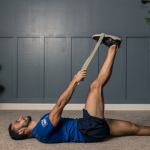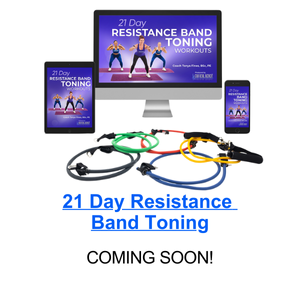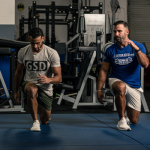The idea of “band” training has been around for years. Back in the day, before all of the oversized rubber bands and green, red and blue tubes we see everywhere, there were Expander Cables. Remember…they were those triple steel coiled objects that had handles at each end? Ads for these were usually found in the back pages of all muscle and strength magazines.
Yes, old school indeed!
Expander Cables were common place at the gym and used in addition to free weight training and machines. They were a great alternative for bodybuilders but they did have one huge drawback…they pinched your skin on certain exercises, like pectoral flyes to name one.
Not that today’s bands aren’t capable of pinching and rubbing your flesh a bit much or pulling out some arm hair here and there…but the coils were just downright painful and had limits to what they could do. However, the concept was revolutionary at the time and the expander cables did a great job at incorporating FOUR KEY principles in weight training:
- Time under Tension (TUT)
- Accommodating Resistance
- Range of Motion (ROM)
- Speed Work
The rubber bands, tubing and straps that have grown in popularity in recent years, commonly known as bands to most powerlifters and bodybuilders, do an equally good job of delivering results for all four of those above mentioned principles.
Plus, they are much more versatile, travel easier, come in a variety of resistances and are relatively cheap when it’s time to replace them.
To be clear, there are powerlifting bands that powerlifters in particular use regularly to help with strength and speed on their lifts. These bands are used in conjunction with mostly barbell and dumbbell exercises and they are like giant rubber bands.
Most of the other bands you will find in the marketplace either have the handles at each end (or not) and can be used along with free weights or by themselves. They can also be anchored to stationary objects making them user friendly. Regardless of the brand or type, these prominent strength tools function extremely well on their own.
While these rubber strength bands and colorful exercise bands have their differences, the concepts of what they do for the body is very much the same.
With that being said, let’s touch on WHY applying the aforementioned principles in your bands is so effective for helping you gain muscle size, strength or both. I will touch on the nuances of those variables later on.
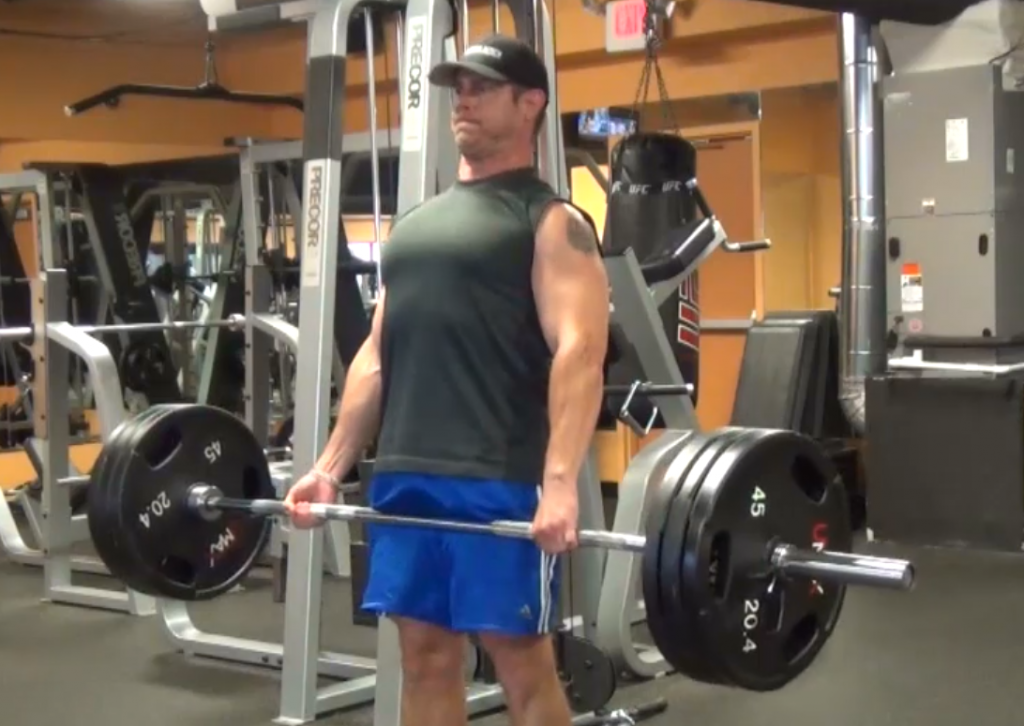
FOUR Key Principles
Time under Tension or (TUT) is by no means a new approach to weight training and if you’re reading this and unsure of what time under tension means, it’s simply the amount of time your muscles are under tension or in a state of contraction during an exercise. To manipulate this time can completely change the reaction your body has to the resistance.
Using bands in your training, regardless of the load you’re working with, can create a terrific prolonged stimulus to the muscles you’re targeting and deliver “the burn” that many gym goers are looking for. This burn (without getting all scientific on you) is due to the increased blood flow and buildup of lactic acid in the targeted muscle group resulting in or approaching muscular failure.
Keep in mind that the powerlifters out there aren’t going for this burn like the bodybuilders. In fact, many of them don’t ever really feel the burn….it’s not the focus of why they train.
The Founder of Critical Bench, Mike Westerdal, told me flat out that for years during his competitive powerlifting career (2007-10), he NEVER got the ‘muscle burn’ during his workouts. Lifting maximum loads with all-out effort and 5-10 minute rest intervals just didn’t provide that kind of reaction for the body.
Remember…..
Muscle Strengthening and Muscle Building/Shaping are TWO Different Goals
A powerlifter trains for a 1RM (repetition max – max effort lift) strength while the bodybuilder trains for volume to help swell the muscles and cause them to grow in size.
I understand how this can be quite confusing for some but simply, you’re either trying to get stronger in the gym or you’re trying to look better. Now there is the hybrid ‘powerbuilder’ that wants both and that particular category of lifter has certainly gained momentum in recent years. It is important to understand these differences and know why YOU are in the gym to begin with.
What GOALS do you have and how do you want to implement band training?
- Goal for Lifter A: Muscle Tone, Size and Fat Loss (bodybuilder)
- Goal for Lifter B: Strength (powerlifter)
- Goal for Lifter C: All of the Above (powerbuilder)
Once those very important variables have been considered, you can now proceed with your band training. Having direction in the gym is paramount in the search for improvement.
This very nicely brings us into another fantastic aspect of band training and something that has had dramatic results for guys looking to gain strength and that is Accommodating Resistance. My definition of this term is simply adding additional, external tension through a specific range of motion to a desired lift. As the weight is moved through its range of motion, it actually increases in difficulty due to the bands elasticity or slingshot-like effect.
This concept alone has produced some astounding lifts the world over using not only bands but chains (similar concept).
Accommodating Resistance really targets strength and demands that you work harder as you go through as much range of motion as possible. Adding additional bands or increasing the girth of the tubes/straps you’re using can help you decrease the rep work while devoting even more effort to sets of only 3-5 reps, thus having dramatic impact on Max Effort Lifts. But keep in mind that this approach can be helpful with isolation lifts too like curls, side raises and arm extensions.
Again, know your reasons for using bands.
Reverse band training can also be super beneficial for making strength gains. At many gyms, you will see bands hanging from the tops of squat racks and power cages. When doing movements like pull-ups for example, bigger lifters and those struggling to gain strength are able to get in rep work for all kinds of pull-up variations. This method can also be applied to the bench press, bent over rows and overhead press to name a few.
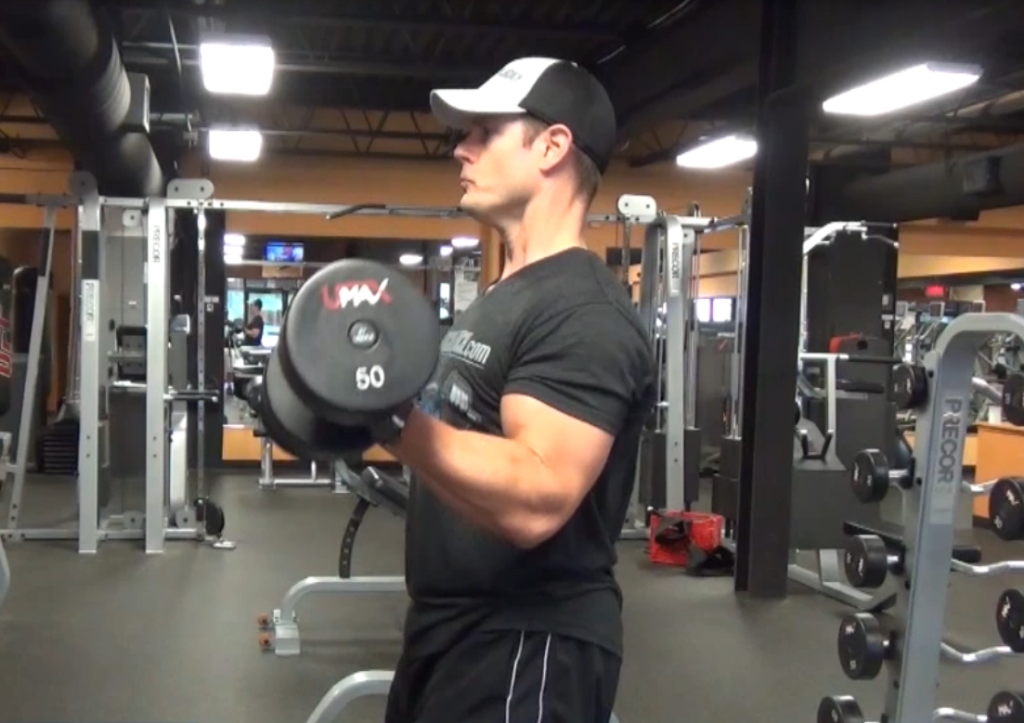
Range of Motion (ROM) is often a topic of conversation at the gym. Some guys need to add some more, some need to decrease and some are on the money (kinds of sounds like the Three Little Bears).
One thing is for sure, everyone’s body is different and due to those unique differences, the ROM will vary.
If I’ve learned anything about the human body in my over 15 years of working with clients, it’s that everyone’s skill set is distinct and you must find a way to maximize their individual ability in the gym while addressing their needs.
Band training can be terrific for stretching the muscles under moderate resistance allowing for improved range of motion while remaining safe and controlled. This can be done very slowly with pauses incorporating the TUT principle from above.
That is precisely why bands of all kinds have become so widely used in rehab facilities, hardcore gyms, fitness centers and especially at home.
Listen, bands are not SCARY. At least, not on the surface. Ask any powerlifter and he may tell you that some of his hardest days in the gym were using rubber bands but just looking at and holding a band is not frightening or disconcerting.
Now just about any athlete has heard the phrase, “speed kills.” Using bands for Speed Work is highly effective at not only making lifters more explosive in their desired lifts BUT it also helps to maintain the integrity of the joints being used.
Moving free weight or machine weight rapidly can certainly be done smartly but over time if the control element is ignored (which we’ve all seen in the gym), injuries can come quickly!
With the use of bands, explosive reps or speed reps can allow the muscles to fire at an accelerated rate while remaining relatively safe. The movement becomes smoother. The idea behind this is that the lifter is working with sub-maximal loads and demanding the fast twitch fibers of the muscles to dominate the lift. This method or style of training actually translates very well to gaining strength with heavier loads for less reps.
Just like a 400 meter sprinter (one time around the track) may spend a significant amount of time on just exploding out of the block, the powerlifter works on speed to help with being more explosive at the most crucial point in the lift, the bottom. Recruiting every single muscle fiber to fire hard and fast making the contraction optimal for a max effort attempt.
Implementing all FOUR of the above mentioned principles when using bands will assuredly allow for muscle growth and strength. Just know your GOALS and stick to a game plan based on those goals in the gym.
BONUS Applications of Band Training
Hey, want a few more PROVEN training techniques with band training that can help with gaining strength and size…sure you do!
Here you go:
- Band training allows you to not only train to failure safely but by decreasing your rest time you can have dramatic impact on your muscle pumping quest. This can be an alternative to increasing resistance by using multiple bands or going to harder/heavier ones. Just cut down your rest periods and work harder!
- Bands can easily be combined with complex strength movements using super-sets or they can sometimes be used FIRST implementing the pre-exhaustion principle. Do multiple sets of band specific exercises BEFORE hitting your traditional barbell and dumbbell exercises. Now you’re really working hard without having to increase the weights.










